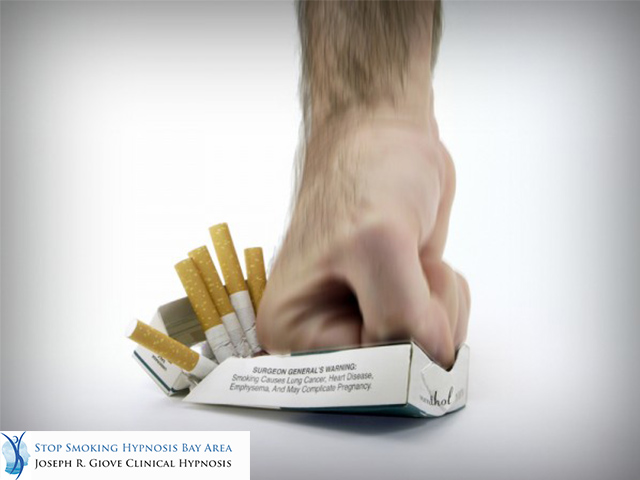
Quitting Smoking Timeline
Quitting smoking improperly is one of the hardest endeavors a person can undertake. Scientists have found that nicotine addiction is similar in intensity to being addicted to heroin or cocaine. There are endless health benefits to quitting smoking including dramatically reducing the chances of developing many cancers (particularly lung cancer), lessening the risk of a stroke or heart attack, and countless other physical and psychological health improvements.
People who successfully quit smoking more often than not look back and remember thinking the process was going to be a nightmare but with help from smoking cessations aids such as Clinical Hypnosis and Hypnotherapy, the actual journey ended up being easier than they first imagined.
The key component of ditching cigarettes for good is first to make the decision to quit. It can be helpful tool is to understand what may happen in your mind and body in the coming minutes, hours, days, weeks, and years when you quit this debilitating addiction called smoking. This article will discuss the different phases the body and mind of the smoker will go through as they start the journey of quitting smoking, and how Clinical Hypnosis and Hypnotherapy can be an important and valuable resource for quitting the easiest way.

The Timeline
The following is a timeline of what the body and mind will go through after the final cigarette is smoked:
20 to 30 Minutes
- The heart rate of a smoker returns to the normal level of a non-smoker. This is how quickly a smoker’s life can change for the better and begin reverting to a normal, healthy state.
- Some people may be feeling anxious knowing that they have just smoked their last cigarette, and keeping the sentiment “one hour and one day at a time” is very important to achieving this goal.
- Thinking about the long term at this point can be overwhelming; focusing on the present is the best way to get through the first steps.
2 to 4 Hours
- The heart rate and blood pressure are almost at normal levels and your peripheral circulation has improved, meaning the senses in the tips of the fingers and toes are returning.
- This can also be the time when cravings begin. Some people experience cravings depending on how long and how much was smoked as and the brain adjusts to not having nicotine poison.
- Distracting the mind from smoking is a useful way to ease the cravings. Doing chores, extra work, or exercise are great ways to take your mind off the looking cigarette break that will never come.
8 to 12 Hours
- Smoking cigarettes causes carbon monoxide to be inhaled into the lungs, which bonds remarkably well with blood cells that make it harder for those blood cells to bond with oxygen cells, in turn leading to heart problems.
- After just 12 hours, the carbon monoxide in the body will decrease by more than half and the blood oxygen levels will increase.
- Some people may experience a restless or sleepless night, but keeping the right mindset and the same bedtime routine is essential.
24 Hours
- The risk of having a stroke or heart attack has now decreased by 70% compared to that of a smoker.
- Clinical Hypnosis and Hypnotherapy is an excellent tool that helps with taking the mind off cravings and the stress that accompanies it, and works by relaxing and gently adjusting your mindset.
48 Hours
- Smoking cigarettes for a prolonged period decreases the sensitivity of taste, smell and touch. At this time, the nerve endings will begin to re-grow and the senses of all three begin to return to levels of a non-smoker.
- At this point over 90% of the nicotine has been removed from the bloodstream.
- Any previously experienced irritability and anger should also subside at this time.
3 Days
- After 72 hours the nicotine will be completely flushed from the body.
- Physical symptoms can include headaches and even stomach pains..
- Despite these side effects, the body is replenishing itself, the bronchial tubes that lead to the air sacs are beginning to relax and breathing becomes easier.
1 to 3 Weeks
- Heart attack and stroke risks have decreased to levels of those of a non-smoker, along with normalized blood circulation and normal psychological behavior.
- The longer a person does not smoke, the more efficient their lungs will be, returning to their previous health.
- Exercise and increased physical activity will be possible and will leave people less “winded” as the efficiency of the lungs increases.
1 to 9 Months
- About one month after the last cigarette, the tiny hair-like organelles that push mucus out of the lungs called cilia, begin to function properly after finally repairing themselves.
- Now that the cilia are functioning properly, the risk of infection drops and in turn excess coughing and shortness of breath with abate.
- Withdrawal symptoms should completely subside in this time frame, and smoke-free living becomes easier and easier
1 Year
- After a full year of not smoking the risk of a heart attack, stroke, and coronary heart disease reduces by 50% compared to that of a smoker.
5 Years to “The Rest of Your Life”
- The risk of having a stroke is now on par with a non-smoker and the risk of being diagnosed with lung cancer is down to a 30 – 50% chance compared to a smoker.
- After 10 years without smoking the risk of acquiring smoking related illnesses, diseases and cancers becomes the same as a non-smoker.
Clinical Hypnosis and Hypnotherapy
After smoking for any period of time, long or short, there will be certain withdrawal symptoms that come with quitting. The symptoms outlined in this article can be mild or quite severe, depending on the individual. Clinical Hypnosis and Hypnotherapy can help ease these symptoms.
There are many ways to quit smoking including patches, gums, lozenges, and inhalants. These options work for some people, but the number one proven method for quitting smoking is Clinical Hypnosis and Hypnotherapy.
Joseph R. Giove is a licensed Clinical Hypnotist and his proven methods have been helping people quit smoking for over 25 years. Clinical Hypnosis and Hypnotherapy is painless and also uses no harmful chemicals or carcinogens found in other quitting smoking methods. If you or someone you know wishes to start on a better, smoke-free path, then Joseph R. Giove Clinic can help.